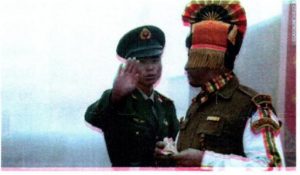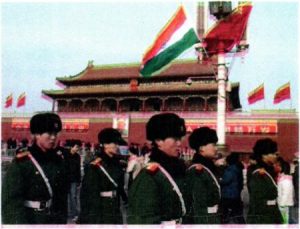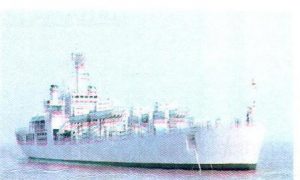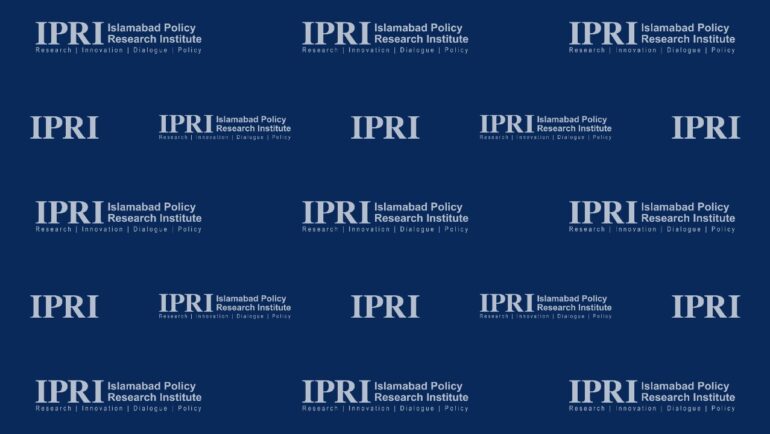Newspaper Article 30/04/2018
Cold War between India and China
By Jamshed Jamshed
Evidently the relationship between China-India has been strained due to border disputes and economic competition that have led to strained relations. The relationship between the two countries began in 1950 when India was among the first countries to end formal ties with the Republic of China (Taiwan) and recognized the People’s Republic of China (PRC) as the legitimate country of Mainland China. China and India are the two most populous countries and fastest growing major economies in the world. Growth in diplomatic and economic influence has increased the significance of their bilateral relationship. However, both the countries are in the race to influence the region due to its geo strategic location.
has been strained due to border disputes and economic competition that have led to strained relations. The relationship between the two countries began in 1950 when India was among the first countries to end formal ties with the Republic of China (Taiwan) and recognized the People’s Republic of China (PRC) as the legitimate country of Mainland China. China and India are the two most populous countries and fastest growing major economies in the world. Growth in diplomatic and economic influence has increased the significance of their bilateral relationship. However, both the countries are in the race to influence the region due to its geo strategic location.
The two countries failed to resolve their border dispute and Indian media outlets have repeatedly reported Chinese military incursions into Indian Territory. Both countries have steadily established military infrastructure along border areas. Additionally, India remains wary about China’s strong strategic bilateral relations with Pakistan, while China has expressed concerns about Indian military and economic activities in the disputed South China Sea.
In June 2012 China stated its position that “Sino-Indian ties” could be the most “important bilateral partnership of the century”. However, India did not respond that initiative from China in equal terms, as Indian media often displayed a noisy and belligerent stand against China. However Wen Jiabao, the Premier of China and Manmohan Singh, the Prime Minister of India set a goal to increase bilateral trade between the two countries.
According to 2014 survey conducted by the Pew Research Center showed 72% of Indians were concerned that territorial disputes between China and neighboring countries could lead to a military conflict. The element of mistrust remains intact even at present between the two countries due to various factors including territorial disputes and hegemonic designs.
The Sino-Indian War was fought in 1962, to resolve the dispute an agreement was concluded in 1996, including “confidence-building measures” and a mutually agreed Line of Actual Control. In 2006, the Chinese ambassador to India claimed that all of Arunachal Pradesh is Chinese territory amidst a military buildup. At the time, both countries claimed incursions as much as a kilometer at the northern tip of Sikkim. It is mentioned that Arunachal Pradesh controlled by India and claimed by China. Arunachal Pradesh borders the states of Assam and Nagaland to the South and shares international borders with Bhutan in the west, Myanmar in the east and is separated from China in the north by the disputed McMahon Line. Itanagar is the capital of the state. A major part of the state is claimed by the Republic of China, and the People’s Republic of China referring to it as “South Tibet”. The major part of the state which is claimed by China was temporarily occupied by Chinese forces during the 1962 war.
In 2009, India announced it would deploy additional military forces along the border. In 2014, India proposed China should acknowledge “One India” policy to resolve the border dispute. Aksai Chin is another disputed border area between China and India. It is administered by China as part of Hotan County, which lies in the southwestern part of Hotan Prefecture of Xinjiang Autonomous Region, but is also claimed by India as a part of the Ladakh region of the state of Jammu and Kashmir.
military forces along the border. In 2014, India proposed China should acknowledge “One India” policy to resolve the border dispute. Aksai Chin is another disputed border area between China and India. It is administered by China as part of Hotan County, which lies in the southwestern part of Hotan Prefecture of Xinjiang Autonomous Region, but is also claimed by India as a part of the Ladakh region of the state of Jammu and Kashmir.
It is added that Shaksgam Valley – controlled by China and claimed by India (Conferred to China in 1963 by Pakistan) Trans-Karakoram Tract. The Trans-Karakoram Tract also known as Shaksgam or the Shaksgam Tract is an area of more than 9,900 km2 (3,822 sq mi) along both sides of the Shaksgam River and extending from the Karakoram to the Kunlun range. The tract is entirely administered by the People’s Republic of China as a part of Kargilik County and Taxkorgan Tajik Autonomous County in the Kashgar Prefecture of Xinjiang Autonomous Region. It is claimed by India as part of the state of Jammu and Kashmir.
Doklam or Zhoglam (in Standard Tibetan), known as Donglang in disputed area of China & Bhutan, is an area with a plateau and a valley, lying between Tibet’s Chumbi Valley to the north, Bhutan’s Ha Valley to the east and India’s Sikkim state to the west. It has been depicted as part of Bhutan in the Bhutanese maps since 1961, but it is also claimed by China. To date, the dispute has not been resolved despite several rounds of border negotiations between Bhutan and China. The area is of strategic importance to all three countries. In June 2017 a military standoff occurred between China and India as China attempted to extend a road on the Doklam plateau southwards near the Doka La pass and Indian troops moved in to prevent the Chinese. India claimed to have acted on behalf of Bhutan, with which it has a ‘special relationship’. Bhutan has formally objected to China’s road construction in the disputed area.
It is a very old desire of India to keep Maldives and other countries of the same status under her total command and control by installing a pro India government there. The Global Times said in a recent editorial, “India has a strong desire to control all South Asian countries. It regards the region as its backyard. New Delhi is particularly sensitive to any endeavor by small South Asian states toward independence and autonomy, especially ties with other major powers. All small South Asian nations want to extricate themselves from India’s excessive leverage.” Particularly in case of the Maldives, India has some very alarming type of fears and apprehensions with reference to the increasing Sino-Maldivian closeness. On request of the Maldivian government, China has consented on doing co-operation in construction of a port in Northern Atoll. Moreover last year on 8th December, 2017 a Free Trade Agreement (FTA) was also signed between the Maldives and China during Maldivian President Abdulla Yameen’s four-day visit to Beijing. By signing this agreement, the Maldives became the second South Asian country after Pakistan to sign an FTA with China. This deal also proved a ‘stunning blow’ for India. Earlier in August 2017, the Maldives permitted three Chinese warships to visit the country though India had expressed its strong resentment over the decision. Same is the approach of India towards the countries like Nepal, Sri Lanka, Bhutan and Myanmar and even towards Bangladesh. Whereas, China also want to have its presence as well as influence in the region.
It is worth mention here that dispute between India and China persist in the South China Sea. On 22 July 2011, the INS Air vat, an Indian amphibious assault vessel on a friendly visit to Vietnam, was reportedly contacted 45 nautical miles from the Vietnamese coast in the disputed; South China Sea by a party identifying itself as the PLA Navy and stating that the ship was entering PRC waters. A spokesperson for the Indian Navy explained that as no ship or aircraft was visible, the INS Air vat proceeded on her onward journey as scheduled. The Indian Navy further clarified that there was no confrontation involving the INS Air vat. India supports freedom of navigation in international waters, including in the South China Sea, and the right of passage in accordance with accepted principles of international law. These principles should be respected by all. In September 2011, shortly after the PRC and Vietnam signed an agreement seeking to contain a dispute over the South China Sea, India’s state-run explorer, Oil and Natural Gas Corporation CONGC) said that its overseas investment arm, ONGC Videsh Limited, had signed a three-year agreement with Petro Vietnam for developing long-term co-operation in the oil sector, and that it had accepted Vietnam’s offer of exploration in certain specified blocks in the South China Sea.
and China persist in the South China Sea. On 22 July 2011, the INS Air vat, an Indian amphibious assault vessel on a friendly visit to Vietnam, was reportedly contacted 45 nautical miles from the Vietnamese coast in the disputed; South China Sea by a party identifying itself as the PLA Navy and stating that the ship was entering PRC waters. A spokesperson for the Indian Navy explained that as no ship or aircraft was visible, the INS Air vat proceeded on her onward journey as scheduled. The Indian Navy further clarified that there was no confrontation involving the INS Air vat. India supports freedom of navigation in international waters, including in the South China Sea, and the right of passage in accordance with accepted principles of international law. These principles should be respected by all. In September 2011, shortly after the PRC and Vietnam signed an agreement seeking to contain a dispute over the South China Sea, India’s state-run explorer, Oil and Natural Gas Corporation CONGC) said that its overseas investment arm, ONGC Videsh Limited, had signed a three-year agreement with Petro Vietnam for developing long-term co-operation in the oil sector, and that it had accepted Vietnam’s offer of exploration in certain specified blocks in the South China Sea.
As is evident from the above, the multitude of dispute between India and China are likely to persist as Indian hegemonic designs in the region continue to affect all its neighbors. A recent report on Indian hegemonic designs in the South Asian region says, “India, despite having friendly ties with Pro-India Bangladeshi government lead by Awami League, is exerting pressure to resolve Teesta river dispute on Indian terms.” India must review its hegemonic approach towards its neighbouring countries for the peace and prosperity of the South-Asia.
Disclaimer: Views expressed are of the writer and are not necessarily reflective of IPRI policy.

